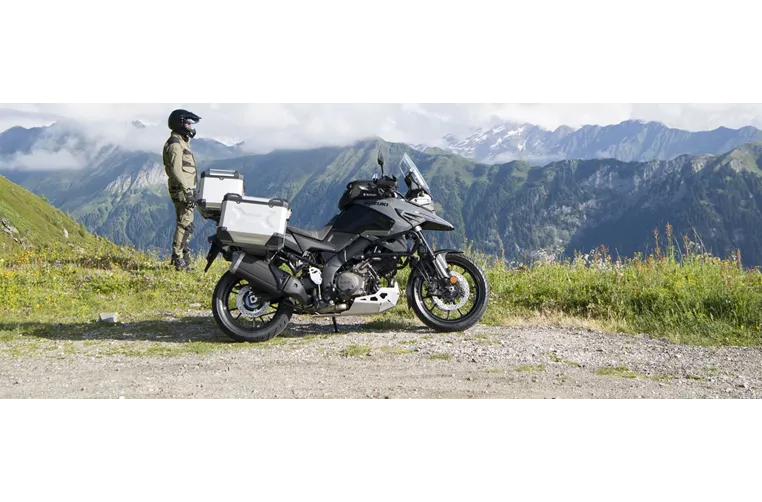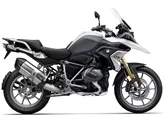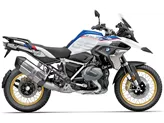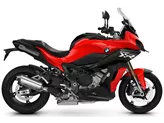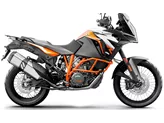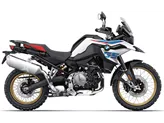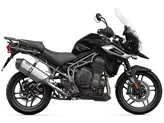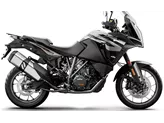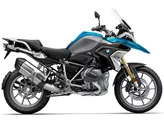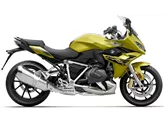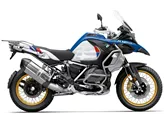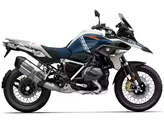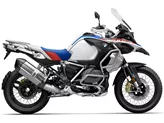BMW R 1250 GS 2019 vs. Suzuki V-Strom 1050 2020

BMW R 1250 GS 2019
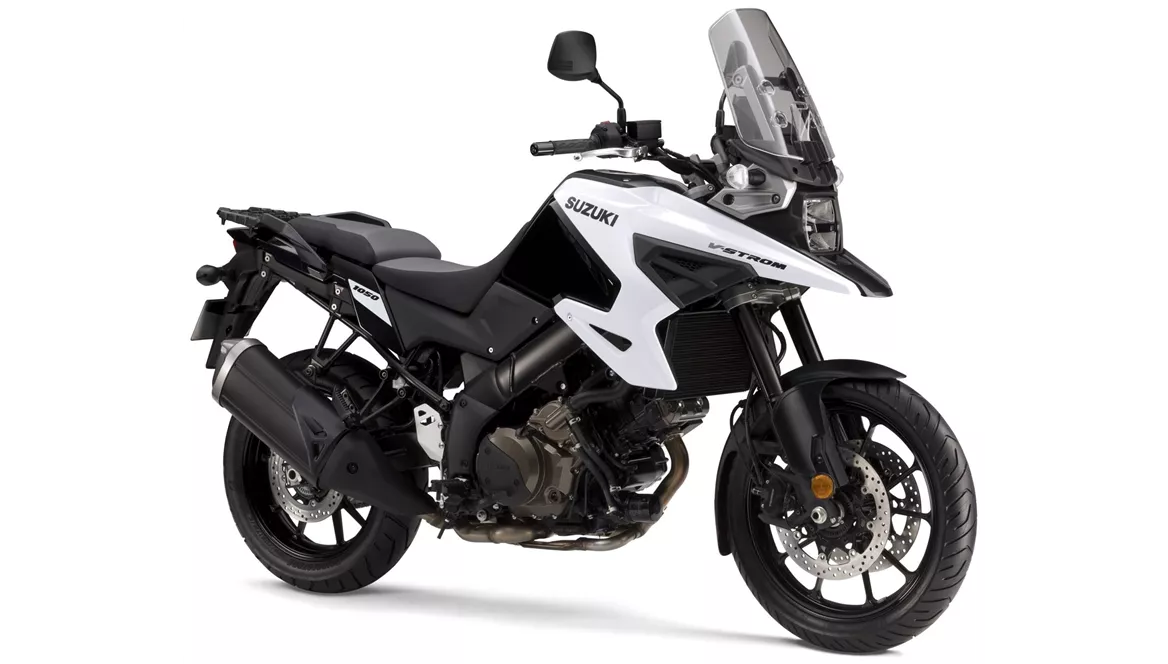
Suzuki V-Strom 1050 2020
Vue d’ensemble - BMW R 1250 GS 2019 vs Suzuki V-Strom 1050 2020
In terms of engine and drive train, the BMW R 1250 GS 2019 is equipped with a boxer engine, while the Suzuki V-Strom 1050 2020 has a V2 engine. The BMW R 1250 GS has a larger bore of 102.5 mm compared to the Suzuki V-Strom's 100 mm. However, the stroke of the BMW R 1250 GS is longer at 76 mm, providing it with more power. The BMW R 1250 GS also has a higher engine power of 136 HP and torque of 143 Nm, compared to the Suzuki V-Strom's 107 HP and 100 Nm. Both motorcycles have an electric starter, but the BMW R 1250 GS has a transmission system with a prop shaft, while the Suzuki V-Strom has a chain transmission.
In terms of suspension, the BMW R 1250 GS has a telelever front suspension with a diameter of 37 mm and a travel of 190 mm. The front suspension of the Suzuki V-Strom is an upside-down telescopic fork with a larger diameter of 43 mm, but a shorter travel of 160 mm. Both motorcycles have a monoshock rear suspension with a travel of 200 mm for the BMW R 1250 GS and 160 mm for the Suzuki V-Strom. The BMW R 1250 GS offers preload adjustment for both the front and rear suspension, while the Suzuki V-Strom provides additional compression and rebound adjustment for the front suspension.
In terms of chassis, the BMW R 1250 GS has a steel frame with a load-bearing engine design, while the Suzuki V-Strom has an aluminum frame with a twin tube design. The rake and trail measurements are similar for both motorcycles, with the BMW R 1250 GS having a rake of 62.9 degrees and a trail of 109 mm, and the Suzuki V-Strom having a rake of 64.7 degrees and a trail of 109 mm.

BMW R 1250 GS 2019
Both motorcycles have double disk front brakes, providing stable braking performance. The BMW R 1250 GS is equipped with advanced rider assistance systems such as ABS, anti-slipping control, riding modes, and ride by wire. The Suzuki V-Strom also has ABS and traction control.
In terms of dimensions and weights, both motorcycles have a front tire diameter of 19 inches and a rear tire diameter of 17 inches. The BMW R 1250 GS has a wider rear tire width of 170 mm, while the Suzuki V-Strom has a rear tire width of 150 mm. The wheelbase of the BMW R 1250 GS is slightly shorter at 1525 mm compared to the Suzuki V-Strom's 1555 mm. The seat height of the BMW R 1250 GS is 850 mm, while the Suzuki V-Strom has a slightly higher seat height of 855 mm. The kerb weight of the BMW R 1250 GS is 249 kg, while the Suzuki V-Strom is lighter at 236 kg. Both motorcycles have a fuel tank capacity of 20 liters.
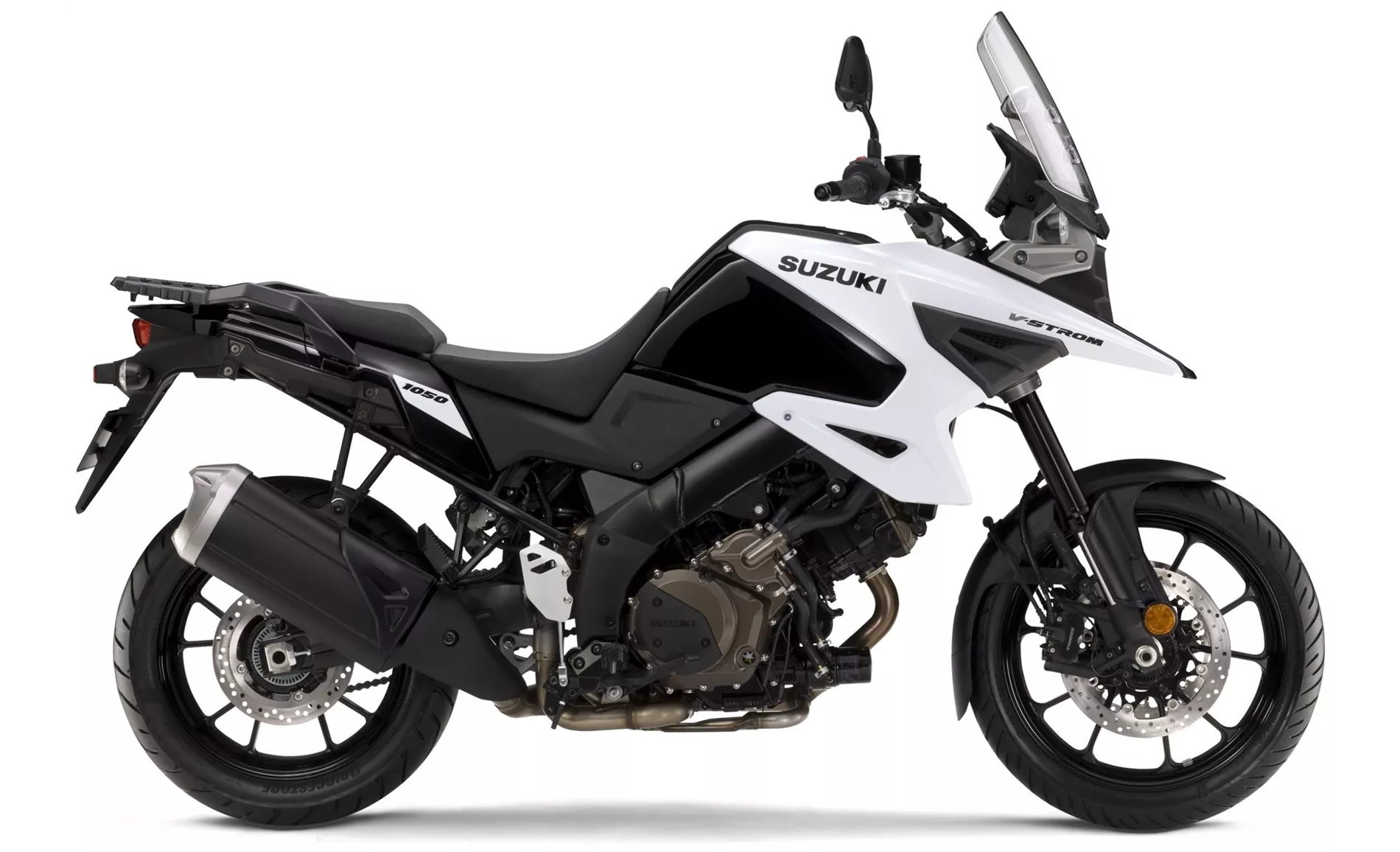
Suzuki V-Strom 1050 2020
In terms of strengths, the BMW R 1250 GS is praised for its extremely high-torque boxer engine, good sound, comfortable seating position suitable for long distances, stable braking performance, good weather protection, standard color TFT display, and LED headlights. On the other hand, the Suzuki V-Strom 1050 is praised for its great V2 engine that performs well in practice, good wind protection, pleasant seating comfort, and great long-distance capability.
In terms of weaknesses, the BMW R 1250 GS is criticized for its manageable standard equipment and long surcharge list, as well as its jagged appearance with little elegance. The Suzuki V-Strom 1050 is criticized for its deficits in equipment, with some details from the XT version being missed.
Overall, the BMW R 1250 GS 2019 and the Suzuki V-Strom 1050 2020 are both capable enduro motorcycles with their own strengths and weaknesses. The BMW R 1250 GS offers a more powerful engine and advanced rider assistance systems, while the Suzuki V-Strom provides a comfortable riding experience and a great V2 engine.
Caractéristiques techniques BMW R 1250 GS 2019 par rapport à Suzuki V-Strom 1050 2020
Avantages et inconvénients en comparaison
Avantages et inconvénients en comparaison
BMW R 1250 GS 2019

La BMW R 1250 GS est l'évolution logique de la R 1200 GS - logique surtout parce qu'on ne peut pas s'attendre à ce qu'une moto aussi populaire soit radicalement modifiée. En conséquence, le design est modifié avec précaution et les options connues sont conservées pour le châssis et l'électronique. Le nouveau nom R 1250 GS promet cependant un nouveau moteur - et il a effectivement de quoi faire ! 136 ch à 7750 tours et pas moins de 143 newtons-mètres de couple maximal à 6250 tours, c'est une véritable bombe ! BMW rénove ainsi presque parfaitement la grande GS : elle reste clairement identifiable, dispose d'un peu plus d'électronique de série, d'une liste de prix supplémentaires toujours aussi longue (que la clientèle aime cocher de A à Z) et d'un moteur encore plus performant et souverain - que peut-on demander de plus ?
Suzuki V-Strom 1050 2020
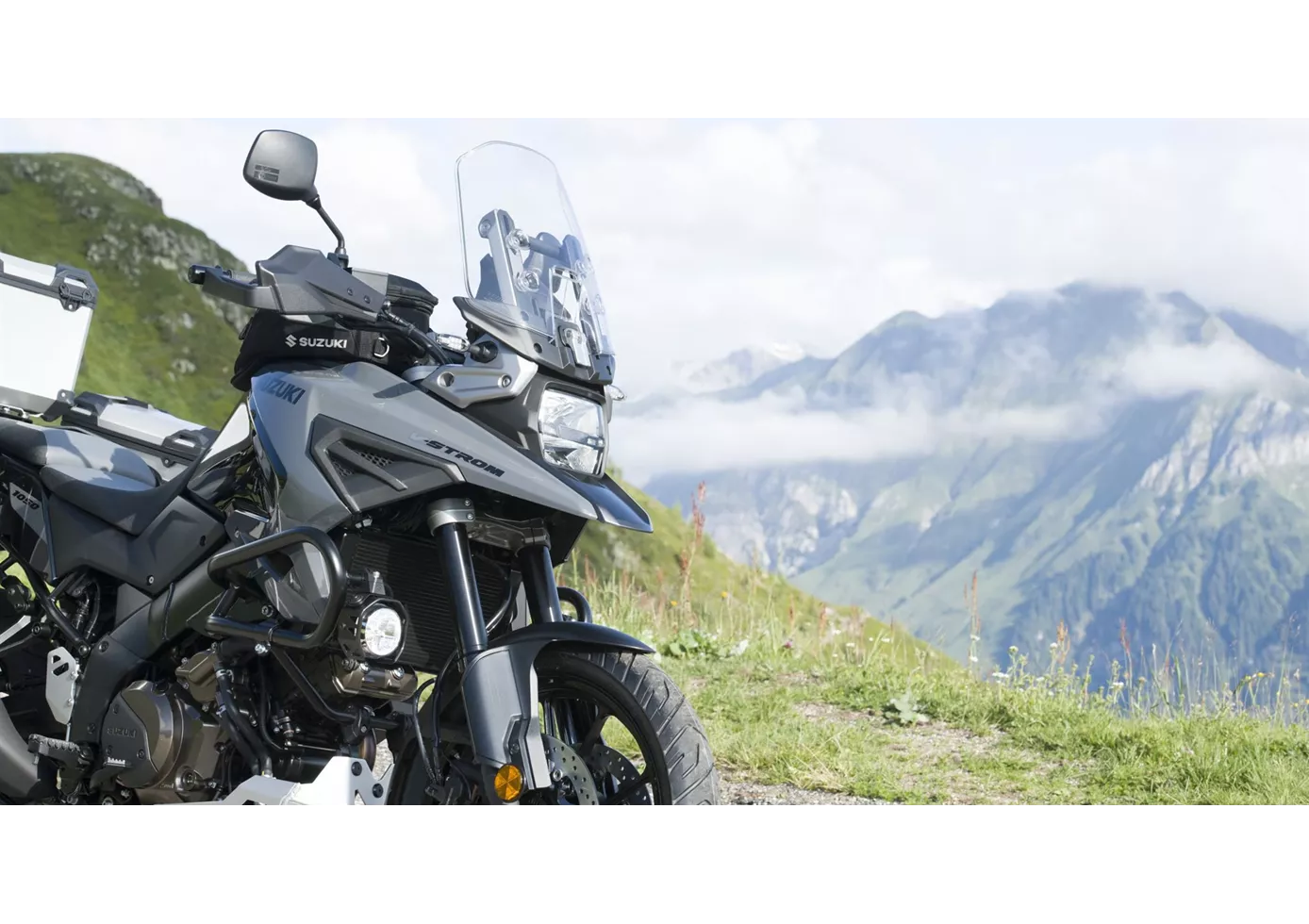
La V-Strom s'est améliorée sur plusieurs points en 2020. L'optique correspond désormais mieux à la superbe moto et distille également plus d'amour du détail. La pièce maîtresse, le moteur, procure toujours autant de plaisir qu'auparavant. Un moteur formidable ! Il n'est pas trop exigeant, mais procure beaucoup de plaisir de conduire ! Elle est adaptée à un usage quotidien, mais elle offre aussi beaucoup de charisme !
Comparaison des prix Prix moyen du marché BMW R 1250 GS vs Suzuki V-Strom 1050
There are a few key differences between a BMW R 1250 GS 2019 and a Suzuki V-Strom 1050 2020. In terms of price, the actual average price of a BMW R 1250 GS 2019 is about 57% higher. A BMW R 1250 GS 2019 experiences a loss of 960 USD in one year and 910 USD in two years of ownership. This is offset by a loss of 270 USD and 210 USD for a Suzuki V-Strom 1050 2020. Compared to Suzuki V-Strom 1050 2020 there are more BMW R 1250 GS 2019 bikes available on the 1000PS.de Marketplace, specifically 104 compared to 6. It takes less time to sell a BMW R 1250 GS with 46 days compared to 127 days for a Suzuki V-Strom 1050. Since model year 2019 1000PS.de editors have written 50 reviews for the BMW R 1250 GS and 10 reviews for the Suzuki V-Strom 1050 since model year 2020. The first review for the BMW R 1250 GS was published on 9/19/2018 and now has more than 305,600 views. This compares to more than 104,400 views for the first review on Suzuki V-Strom 1050 published on 1/30/2020.

